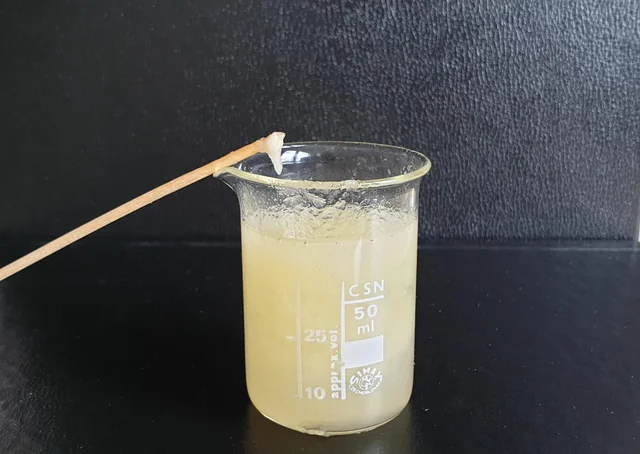What makes us who we are? Things like our hair color, eye color, body shape, whether we’re male or female, or even the fact that we’re human instead of a dog, are all determined by something called DNA.
DNA can be a tricky subject for kids because it’s hard to understand—it’s not something we can see easily. The actual structure of DNA is so tiny you’d need an electron microscope to look at it! But you can see the strands that make up DNA, and you can even extract them from a banana. Here’s a simple experiment to show your child how to extract DNA, so they can see the strands inside the cells for themselves.
What Is DNA
DNA, or deoxyribonucleic acid, is the material inside the cells of living things that carries the genetic code for creating and maintaining life. While most living organisms have DNA, some viruses have RNA instead.
DNA is made up of smaller sections called genes, and each gene contains the instructions for how an organism looks and functions. In most cells, DNA exists as two strands that are joined together, but in reproductive cells (sperm and eggs), the DNA is split. When these cells come together during reproduction, they combine their DNA to form a new organism.
This mixing of DNA is what creates genetic variation, which is why no two people (or animals) are exactly alike.
If you’d like to make a model of DNA, you can try creating a Candy DNA Model, which we found fun and educational at Science Sparks.
Though you can’t see the actual DNA structure with the naked eye, this simple science experiment for kids will let you collect DNA and show that it’s string-like, giving a glimpse into how DNA works.
Extracting DNA With Kids
DNA can be easily extracted from soft fruits like bananas because they are simple for kids to mash and puree. Mashing breaks down some of the cell structures, making it easier to extract and view the DNA. This is a fun and hands-on way for kids to understand how DNA works!
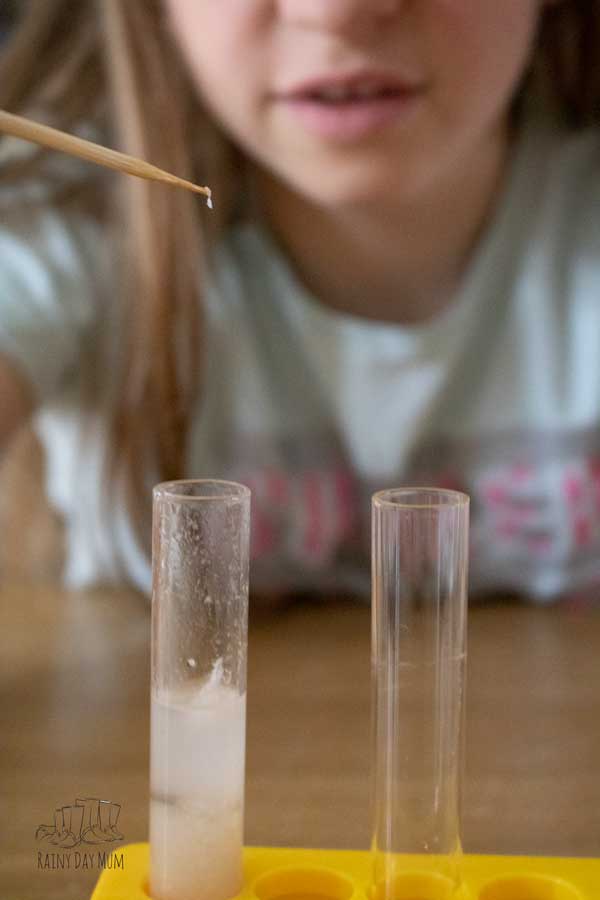
We used a banana because it was the softest fruit we had at home, but fruits like pineapple, strawberry, and kiwi work really well too.
Just a reminder, adult supervision is needed when handling Isopropyl alcohol, as it can be hazardous if not used properly.
Materials Needed For DNA Extraction From A Banana
We’ve provided instructions for extracting DNA using a Chemistry set, which you can find on US Amazon or UK Amazon if you have one at home. Alternatively, you can also use simple kitchen equipment to carry out the experiment if you prefer a more accessible option.
COMMON MATERIALS
- Knife
- Chopping board
- Sieve
- Bamboo Skewer
- Banana
- Isopropyl alcohol (Rubbing Alcohol) available from the Chemist or on Amazon in the UK a VERY strong vodka may work but we didn’t try that in this experiment
- Warm water
- 1 tea spoon of salt
- Washing-up Liquid (Dish Soap)
MATERIALS FROM CHEMISTRY SET
- 2 x Beaker or Beaker and Conical Flask
- Stirring Road
- 2 Test tubes
- Test Tube Holder
MATERIALS FROM THE KITCHEN
- 2 glases
- Plastic bag which seals
- Fork
Preparation
You will need to place the Isopropyl alcohol in the freezer before starting the experiment, as you need it to be cold for the extraction process. Make sure to give it enough time to chill!
HOW TO EXTRACT DNA FROM A BANANA
Make sure you have a clear and clean workspace before starting, and wear safety glasses for protection while conducting the experiment.
Step 1: Cut up half a banana into slices and then quarter these slices to make it easier to mash.
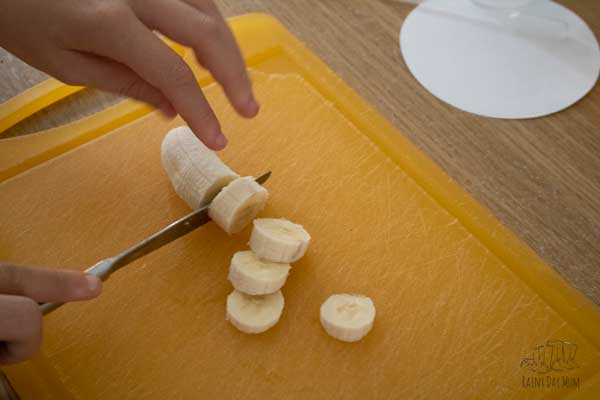
Step 2: Place the banana in a beaker or a small sealable plastic bag. Then, smash it into a mush! You can use a fork or stirring rod to mash it in the beaker, or use your hands on the outside of the plastic bag to crush the banana.
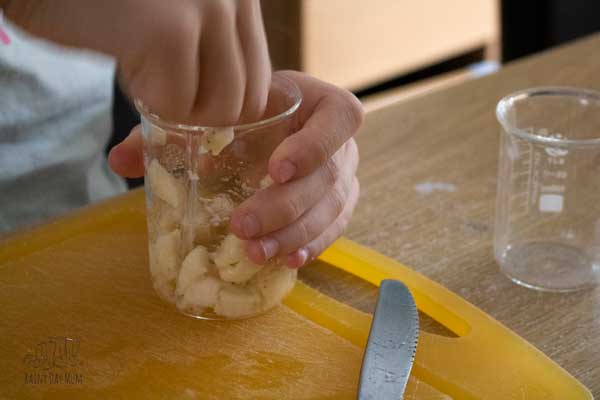

Step 3: In a separate beaker or glass, prepare a solution by adding warm water and dissolving a teaspoon of salt. Once the salt is dissolved, add about 5 small squirts of washing-up liquid and stir well. This solution helps break down the cell membranes.

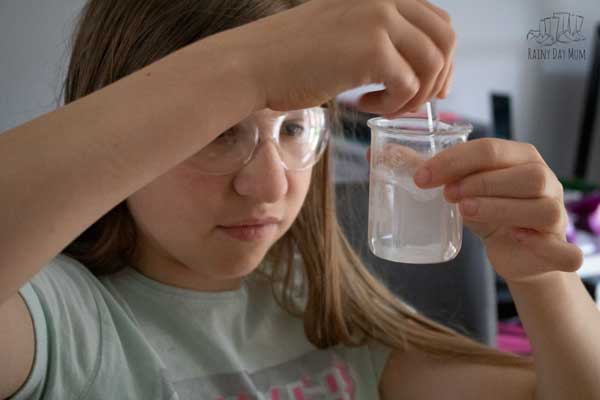
Step 4: Pour the salt and washing-up liquid mixture into the mushed-up bananas. Stir thoroughly until you have a gooey, liquidy banana solution. This helps release the DNA from the cells.
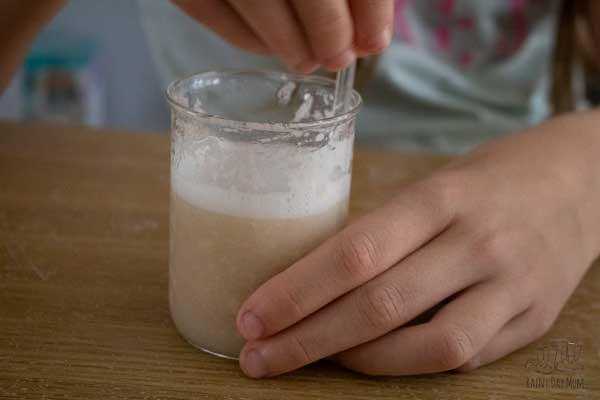
Step 5: Place a sieve over the glass or beaker you used for the water mixture. Pour the banana mixture into the sieve, letting the liquid pass through while catching any remaining clumps of banana. This will leave you with a filtered banana liquid.

Step 6: Now, half-fill an empty glass or test tube with the filtered banana solution. This will prepare it for the next step in the extraction process.
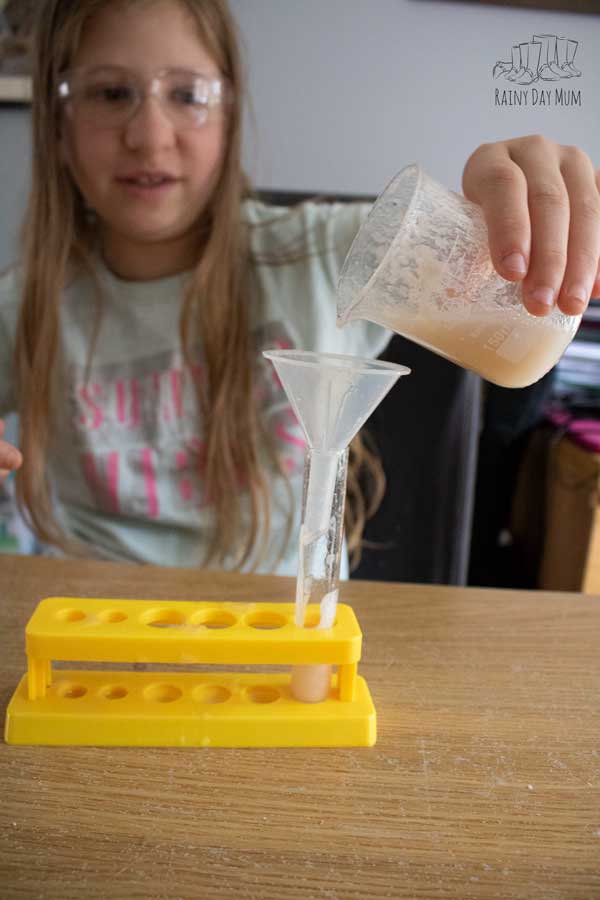
Step 7: Ask an adult to fill a test tube about 1 cm full, or a glass about 1/4 full, with the Isopropyl alcohol that has been chilled in the freezer.
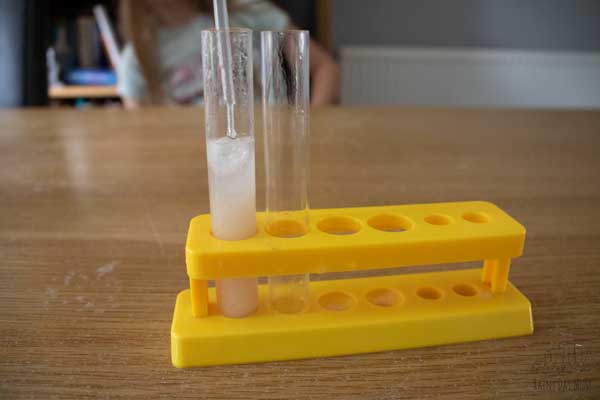
Step 8: Gently pour the cold Isopropyl alcohol down the side of the test tube or glass containing the banana solution. You may find it easier to do this with a pipette if you have one available. This will allow the alcohol to layer on top of the banana solution without mixing.
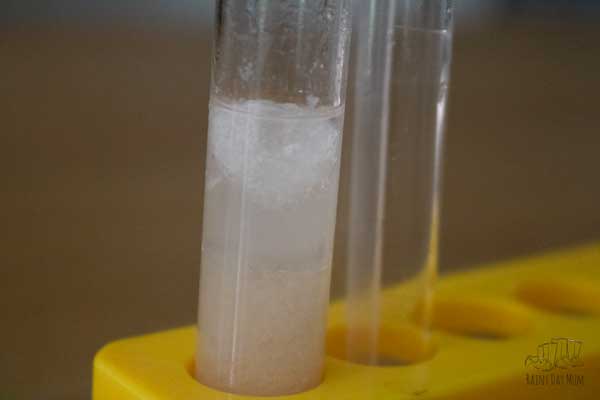
Step 9: Observe the layer of white that forms above the banana liquid. This is the DNA! Take a skewer or similar object, gently place it into this white layer, and then pull it out. You should be able to see the strands of DNA clinging to the skewer.
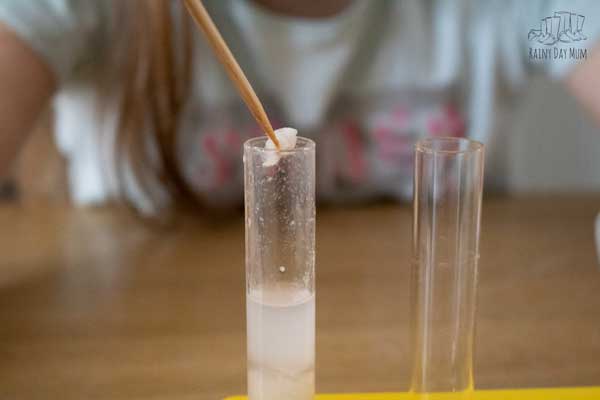
That snot-like substance you see is actually strands of DNA! You can use a microscope or a magnifying glass to get a closer look at the strands and examine them in more detail. Full instructions on how to prepare DNA samples for viewing, as well as how to extract DNA from a strawberry, can be found here (under “What does Strawberry DNA look like”).
The Process Explained
DNA is stored in the nucleus of the cells within the banana. To extract it, we need to break up the cells and their membranes so that the DNA is released into the liquid.
Mashing the banana helps break up some of the cells, but the salt and soap are needed to fully break down the cell membranes and free the DNA. The soap helps to dissolve the cell walls and membranes, while the salt helps to trap the DNA, allowing it to become visible in the liquid.
Isopropyl alcohol is crucial because DNA doesn’t mix with it. Instead, it forms a separate layer on top of the banana liquid. By adding the alcohol carefully, the DNA collects in this layer, and we can then use a skewer to pull it out and examine it.
Where Does This Fit In Science?
It’s a fun experiment for kids, but how does it fit into science learning? Here are some ideas on where you can incorporate this experiment.
LEARNING ABOUT DINOSAURS
If you’re learning about dinosaurs and the question arises, “Could we recreate them now?” then DNA is key to the discussion. Perhaps you’ve seen Jurassic Park, where they extract DNA from a mosquito—now, you can see what that DNA extraction might look like in real life!
WHEN LEARNING ABOUT REPRODUCTION
A great time to introduce DNA is when discussing sexual reproduction, as this is when the female and male sex cells combine to create offspring. Whether it’s plants or animals, understanding DNA helps explain how traits are passed down and how new organisms are formed.
EVOLUTION, INHERITANCE AND NATURAL SELECTION
If you’re covering evolution and inheritance, this experiment is a perfect opportunity to explore how characteristics are passed to offspring. It’s a great way to introduce the concept of genetic variation and mutation before diving deeper into these topics.
CONCLUSION
In conclusion, extracting DNA from a banana is a fun and hands-on way for kids to understand the basics of genetics. This experiment demonstrates how DNA is released from cells and allows children to visually observe DNA strands. Whether you’re learning about dinosaurs, sexual reproduction, or evolution, this simple experiment ties into key scientific concepts, making it an engaging introduction to the fascinating world of DNA and inheritance.

